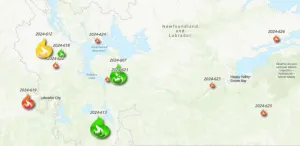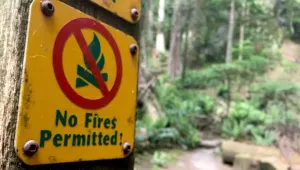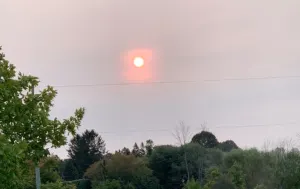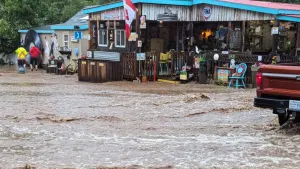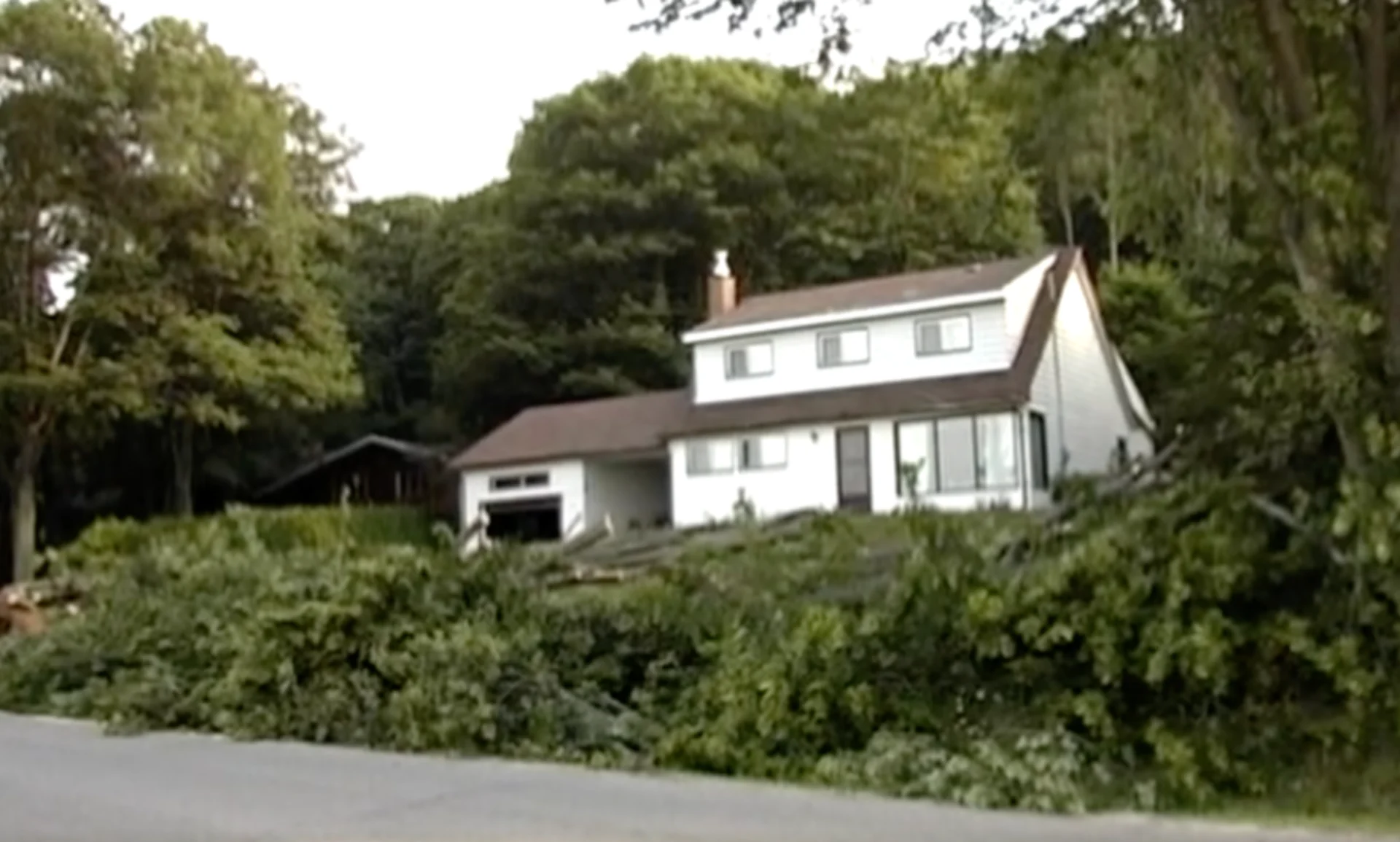
What to do if you're camping when a tornado hits
In the woods off McCrae Lake near Georgian Bay, David Arama and about two dozen campers waited out a storm huddled beneath overturned canoes.
Once the blistering winds had passed through, the group emerged to find their tents destroyed.
"Had we stayed inside our tents, we probably would have had mass casualties," Arama said.
Whether the group under his instruction had evaded a tornado or a microburst — a violent rush of sinking air within a thunderstorm — Arama still isn't sure.
But the owner of outdoor education company WSC Survival School Inc. said that close call in 2002 served as a lasting reminder about the importance of respecting extreme weather.
RELATED: If you're camping, make sure you have a plan for severe weather
"Being out camping is a risk, and tornadic activity is definitely the last thing on Earth you want to be out in," he said. "I'll take a bear, angry mosquitoes — you know, just about anything but a tornado."
With four tornadoes recently confirmed in Ottawa and surrounding areas, outdoor experts told CBC what campers should — and should not — do if they're caught in a tornado.
The tornadoes
Two of those recent tornadoes hit the south Ottawa suburb of Barrhaven on July 13.
The Northern Tornadoes Project (NTP), a research group founded by Western University, found both had a maximum estimated wind speed of 155 km/h.
At least 125 homes sustained damage from the tornadoes, which were categorized as EF-1 on the enhanced Fujita scale, a measure of tornado strength.
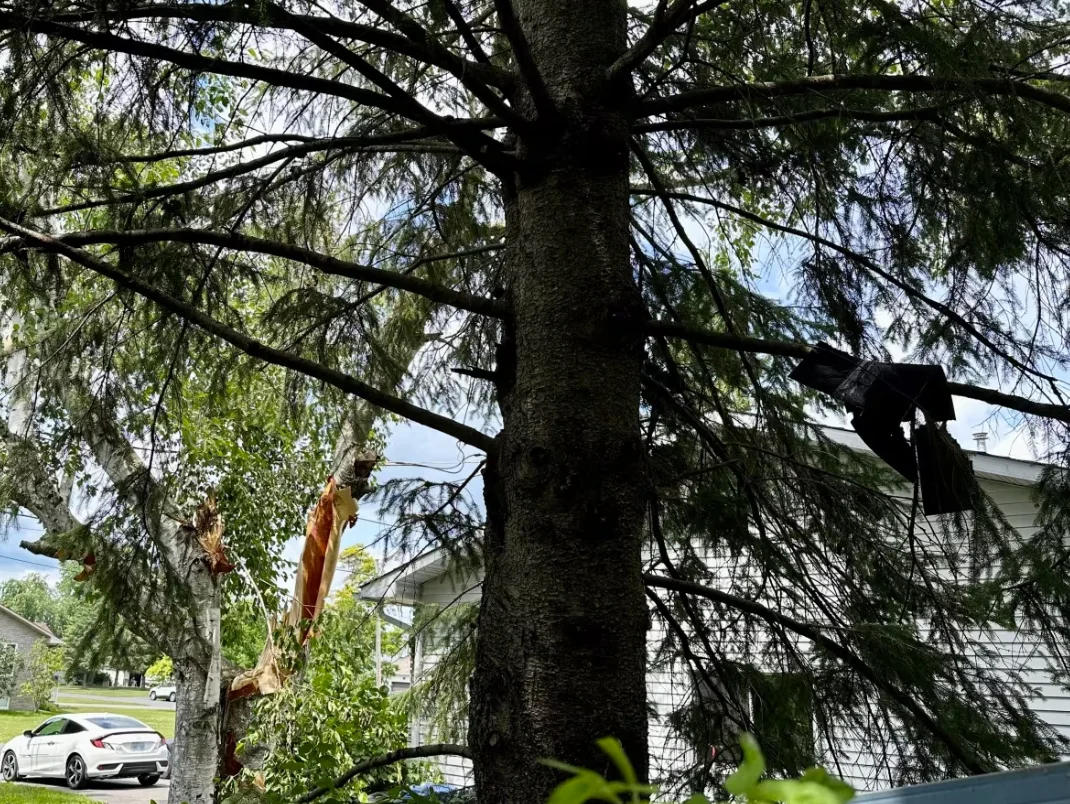
Shingles from roofs landed in this tree, next to another that cracked during the tornado in Embrun. (Natalia Goodwin/CBC)
Another NTP investigation released the following Wednesday found two more tornadoes touched down in eastern Ontario on the same day.
One struck Embrun, Ont., while the other struck between Fournier and St-Bernardin, Ont.
Classified as EF-0, those tornadoes were not as destructive as the two in Barrhaven, according to the NTP, and only caused minor damage to trees, crops and roofs on several houses.
Certain trees can be dangerous
Even tornadoes of lower magnitudes are powerful enough to do significant property damage and kill or seriously injure people, Arama said.
Although the end result of getting caught in one may come down to "sheer luck," he said, campers can improve their chances of survival.
If no buildings are available nearby, Arama recommended people seek shelter on the leeward, or downwind side of a large rock or rocky outcrop.
Because storms tend to move from west to east, sheltering on the southeast side of a rock could protect campers from any trees that snap and fall in an eastward direction, Arama said.
"Not a guarantee, though," he said. "Even branches could be enough to kill you."
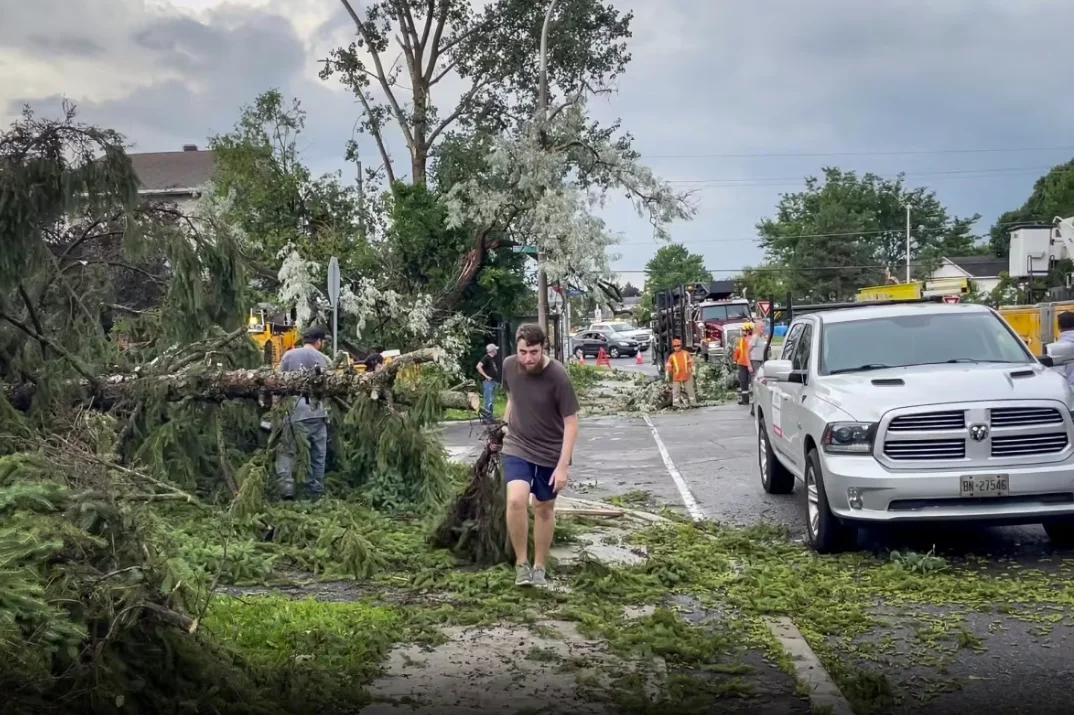
A man drags debris from a fallen tree along a sidewalk in Barrhaven on July 13 after an EF-1 tornado passed through the neighbourhood. (CBC)
Monica Vaswani, a warning preparedness meteorologist with Environment Canada, said while severe thunderstorms do tend to move eastward, storm movement with respect to tornadoes is less predictable.
As a result, Arama said, awareness about surrounding tree species may be a lifesaver.
Seek out healthy hardwoods — such as oak, maple and beach — that are less likely to snap in a storm, he said.
In turn, he recommended avoiding softer trees such as birch, pine and poplar.
"White pines are really notorious," he said. "They snap in half."
Jason Smith, a recreation program manager for multiple federally protected forests and grasslands in Colorado and Kansas, agrees.
SEE ALSO: Don’t fall victim to these seven dangerous tornado myths
In addition to seeking out sturdy tree species, Smith said to avoid burn areas and other places where the canopy may already be damaged.
If the immediate surroundings aren't wooded, he recommended dropping low to the ground and seeking out a ditch.
Car camping
Anyone who has access to a vehicle, Smith said, should drive to a nearby town as soon as they are alerted to an incoming tornado.
"That doesn't mean try to outrun it," he said. "Because chances are you probably won't, and your vehicle may be hit by debris."
But if someone is already on the road or stranded in their vehicle, he said, they should pull over, duck below the windows and cover their head and neck with their hands.
WATCH: See the tornado that touched down in Ottawa
Although it may be tempting, he said, drivers or pedestrians should never take shelter under a bridge or overpass, because the structure creates a "wind tunnel" that may suck dangerous debris through.
Smith summed up his best advice, however, as "know before you go."
"Make sure you're looking at where you're going to be," he said.
Several technologies make it easier than ever for campers — even those who venture deep into the backcountry — to stay on top of adverse weather, Arama said.
He recommended bringing along a satellite tracking device or satellite phone, or purchasing a cellphone signal amplifier that can boost the signal by up to 40 times.
That way, he said, campers can remain patched into the Environment Canada alert system.
"I believe they're a lifesaver," he said. "They do make a difference."
This article, written by Ben Andrews, was originally published for CBC News.






